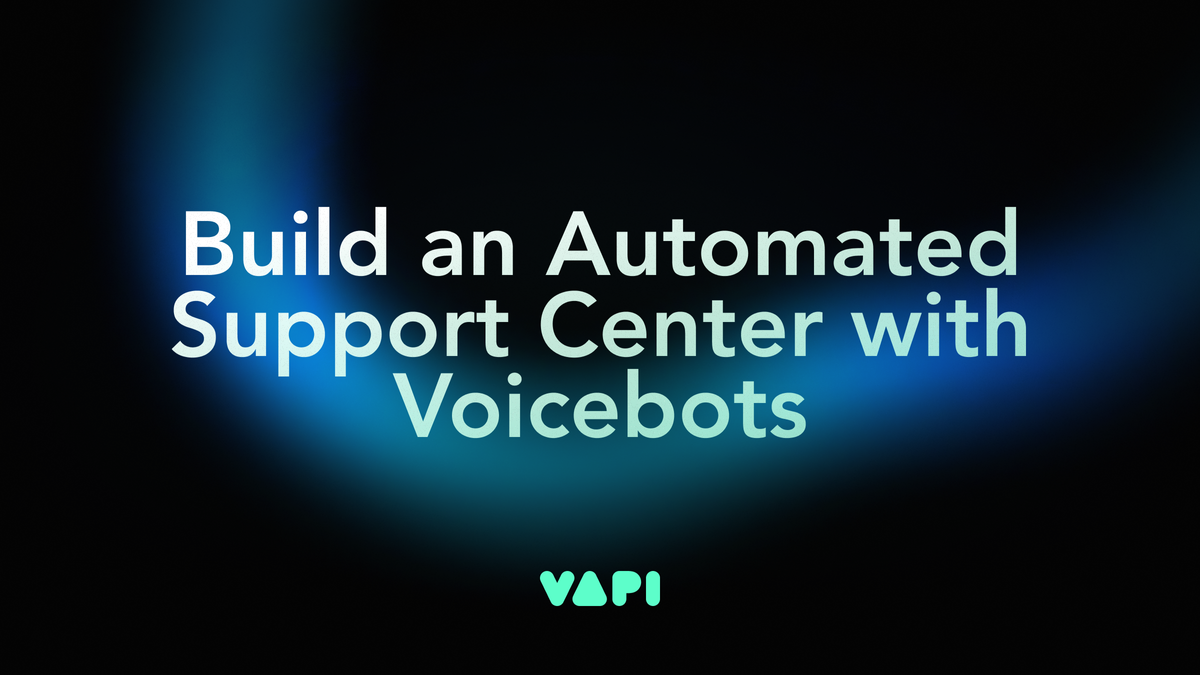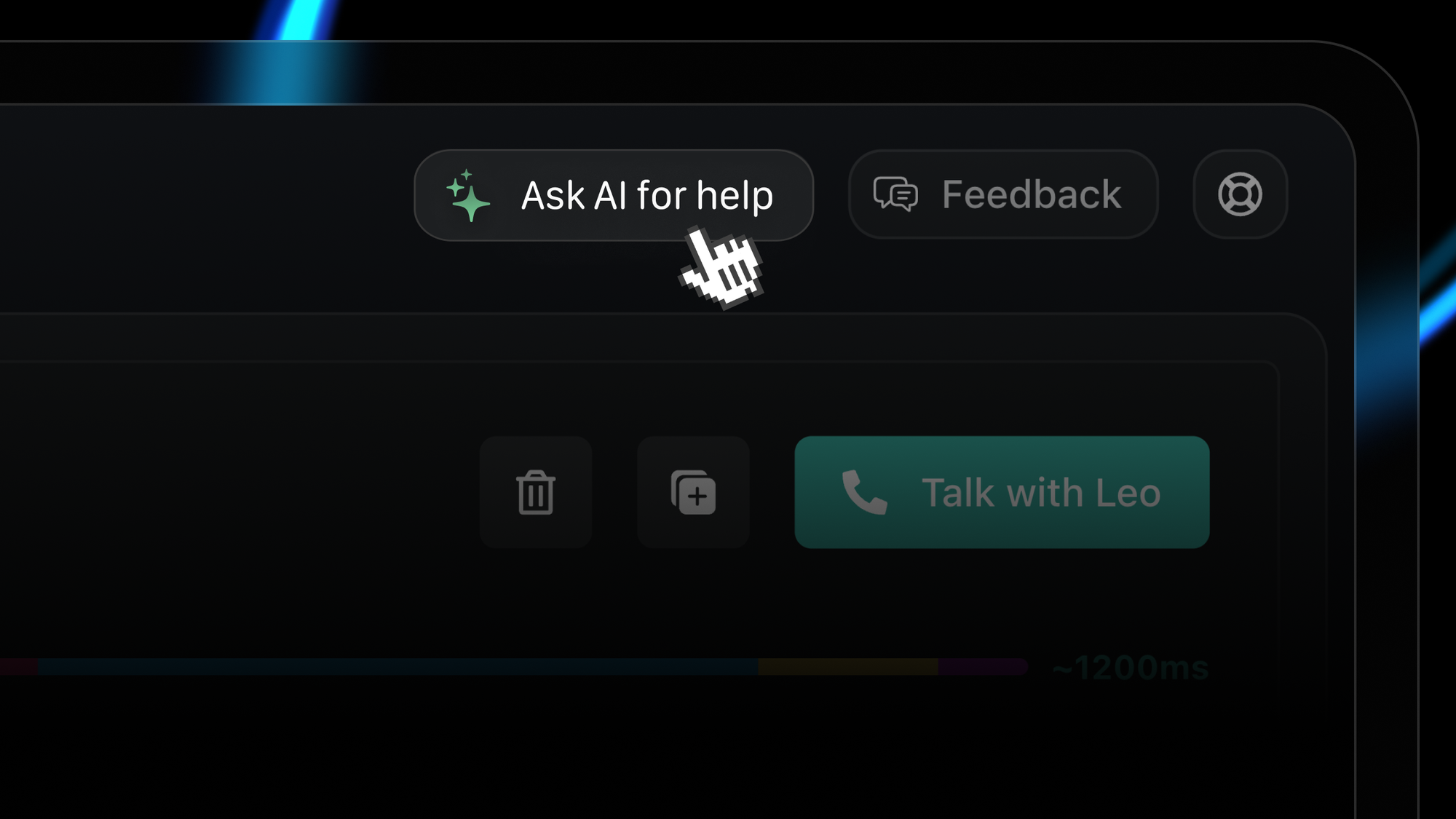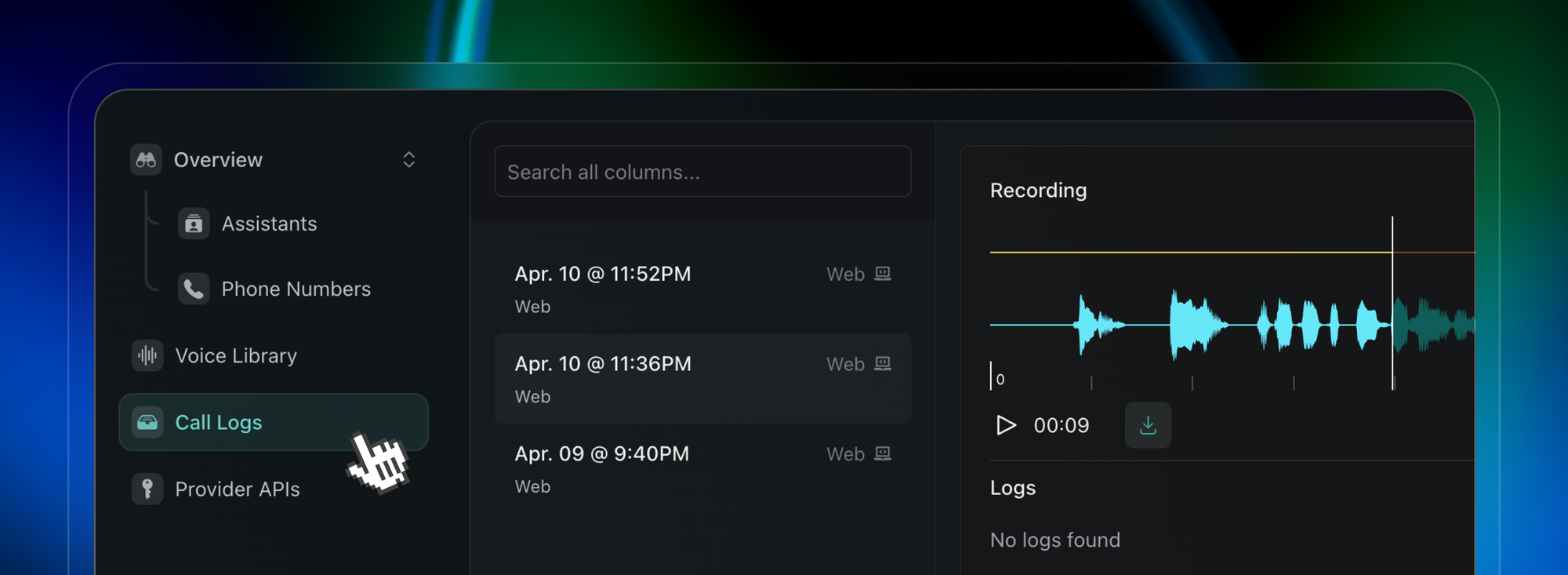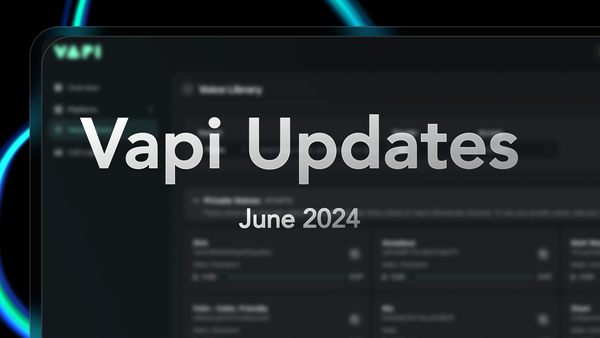Build an Automated Support Center with Voicebots

In recent years, the demand for efficient and personalized customer support has skyrocketed.
As businesses strive to meet these expectations, many are turning to automated support centers powered by AI and voice technology. These smart systems are changing the way companies interact with their customers, offering 24/7 availability, scalability, and improved satisfaction.
In this blog post, we'll explore the importance of automating your support center and how Vapi AI, a platform for building voice agents, can help you achieve this goal.
Why Automate Your Support Center?
Traditional support methods, such as phone, email, and chat, often struggle to keep up with the growing demand for efficient and personalized customer service. Customers expect quick responses and solutions to their problems, regardless of the time of day or the complexity of their inquiry.
Automated support centers address these challenges by leveraging AI and voice technology to provide round-the-clock assistance, handle high volumes of inquiries, and deliver tailored responses.
The benefits of automating your support center are numerous:
- 24/7 Availability: Automated support systems can operate continuously, ensuring that customers can receive assistance at any time, even outside of regular business hours.
- Scalability: As your business grows, an automated support center can easily scale to handle increased volumes of inquiries without the need for additional human resources.
- Cost Reduction: By automating routine tasks and inquiries, businesses can reduce labor costs associated with maintaining a large support team.
- Improved Customer Satisfaction: Automated support centers can provide quick, accurate, and personalized responses, leading to higher levels of customer satisfaction and loyalty.
The Role of Voice AI in Customer Support
Voice AI has emerged as a game-changer in the space of customer service.

By enabling natural and seamless conversations, voice AI offers several advantages over text-based interactions:
- Accessibility: Voice AI makes customer support more accessible for users with disabilities or those who prefer speaking over typing.
- Multilingual Support: With the ability to understand and respond in multiple languages, voice AI can cater to a diverse customer base.
- Natural Interaction: Voice AI allows for more human-like conversations, creating a more engaging and satisfying customer experience.
As discussed in the blog post "How Voice AI is transforming customer support," Vapi is at the forefront of this revolution, empowering businesses to create intelligent voice agents that enhance customer support and drive satisfaction.
Building Voice Agents with Vapi
Vapi is a powerful platform that simplifies the process of building, testing, and deploying voice agents. With its user-friendly interface and integration with popular AI tools like OpenAI and ElevenLabs, Vapi AI enables businesses to create sophisticated voice agents without requiring extensive technical expertise.
Key features of the Vapi AI platform include:
- Intuitive Interface: Vapi AI offers an easy-to-use interface for designing, training, and managing voice agents.
- AI Tool Integration: The platform seamlessly integrates with leading AI tools, allowing businesses to leverage the latest advancements in natural language processing and speech synthesis.
- Scalability and Performance: Vapi AI is built to handle high volumes of inquiries and optimize performance, ensuring that voice agents can deliver swift and reliable assistance.
The potential of AI callers for appointment scheduling and lead engagement. By leveraging platforms like OpenAI's ChatGPT and ElevenLabs, businesses can create scalable and realistic AI solutions that streamline processes and enhance customer interactions.
Moreover, voice AI offers numerous advantages in customer service, including improved efficiency, self-service options, and the ability to analyze customer sentiment. Vapi AI's platform is designed to help businesses harness these benefits and deliver exceptional customer experiences.
Building Your Automated Support Center with Vapi AI

Creating a voice agent using Vapi AI is a straightforward process that involves the following steps:
- Setting up your account: Begin by creating an account on the Vapi AI platform and familiarizing yourself with its features and capabilities.
- Creating a new voice agent: Use Vapi AI's intuitive interface to create a new voice agent, defining its purpose and scope.
- Configuring the agent's personality and capabilities: Customize your voice agent's personality, tone, and abilities to align with your brand and customer expectations.
- Integrating with your existing support systems: Connect your voice agent with your existing support systems, such as ticketing tools or knowledge bases, to ensure seamless integration and data exchange.
- Testing and refining your voice agent: Conduct thorough testing to ensure that your voice agent performs as expected, and refine its responses and capabilities based on user feedback.
When designing voice interactions, it's crucial to follow best practices to ensure natural language understanding and conversation flow. This includes using clear and concise language, providing context-specific responses, and handling common user intents and queries effectively.
Deploying and Scaling Your Voice Agent
Once your voice agent is built and tested, it's time to deploy it to production and make it available to your customers. Vapi simplifies this process by providing tools for seamless deployment and monitoring.
As your business grows and customer demands evolve, your automated support center should be able to scale accordingly. Vapi is designed to handle increasing volumes of inquiries and integrate with other customer support channels, such as chat, email, and social media.
By monitoring performance metrics and gathering user feedback, you can continuously improve your voice agent's effectiveness and ensure that it meets the changing needs of your customers.
The Future of Automated Support Centers
As AI and voice technology continue to advance, the future of automated support centers looks increasingly promising. Emerging trends, such as the growing adoption of conversational AI and the potential impact of generative AI, are set to reshape the customer service landscape.
The blog post "How Conversational AI is transforming customer service" explores how conversational AI is enabling more efficient and personalized interactions, leading to a growing adoption of AI in support firms. As these technologies mature, businesses can expect to see even more sophisticated and human-like voice agents.
According to the "State of AI in Customer Service 2023" survey, AI offers a significant competitive advantage in customer service. The survey highlights that businesses using AI in customer service are more likely to report increased customer satisfaction, faster response times, and reduced costs compared to those not using AI. Furthermore, the survey predicts a transformation in customer service careers over the next five years, with AI playing a crucial role in reshaping the industry.
When implemented correctly, AI can streamline operations and enhance capabilities, leading to improved customer service outcomes. Looking to the future, the IBM blog post "6 ways AI can influence the future of customer service" explores how AI, particularly generative AI tools, can shape the customer service landscape. The post discusses the use of AI to analyze customer interactions and create helpful responses, as well as the potential for AI-assisted human representatives.
By leveraging AI technologies, businesses can deliver more personalized and efficient customer support experiences.
Conclusion
In conclusion, automating your support center with Vapi AI offers numerous benefits, including 24/7 availability, scalability, cost reduction, and improved customer satisfaction. By embracing AI and voice technology, businesses can stay competitive in the ever-evolving landscape of customer service.
The integration of voice AI and platforms like Vapi AI empowers businesses to create intelligent, personalized, and efficient customer support experiences. As AI continues to advance, the future of automated support centers looks increasingly promising, with emerging trends such as conversational AI and generative AI set to reshape the industry.
We encourage businesses to explore the capabilities of Vapi AI and start building their own voice agents. By leveraging the power of AI and voice technology, companies can deliver exceptional customer service, drive satisfaction, and gain a competitive edge in their respective markets.
Related Reading
- How To Automate First-line Support With Twilio Flex: This article discusses how to integrate Twilio Flex with Vapi to automate first-line support, providing a practical example of using Vapi's platform to enhance customer support.
- How Voice AI is Transforming Customer Support: This post explores the impact of Voice AI on customer support, emphasizing the benefits and strategies for optimizing performance, complementing the discussion on the advantages of using Vapi AI for customer service.
- Accelerate Your Voicebot Training Journey with Vapi's Knowledge Base: This article highlights Vapi's Knowledge Base feature, which is crucial for creating effective voice AI assistants, providing insights into how businesses can streamline the training process for voicebots.
- Let's Talk: Voicebots, Latency, and Artificially Intelligent Systems: This post discusses the importance of speed and low latency in voice AI systems, which is essential for creating a seamless customer support experience, aligning with the best practices for implementing voice AI in customer support.
- Improving AI for Atypical Voices is a Win for All of Us: This article addresses the importance of making voice AI accessible for everyone, including users with atypical voices, supporting the discussion on ensuring natural language understanding and conversation flow.





